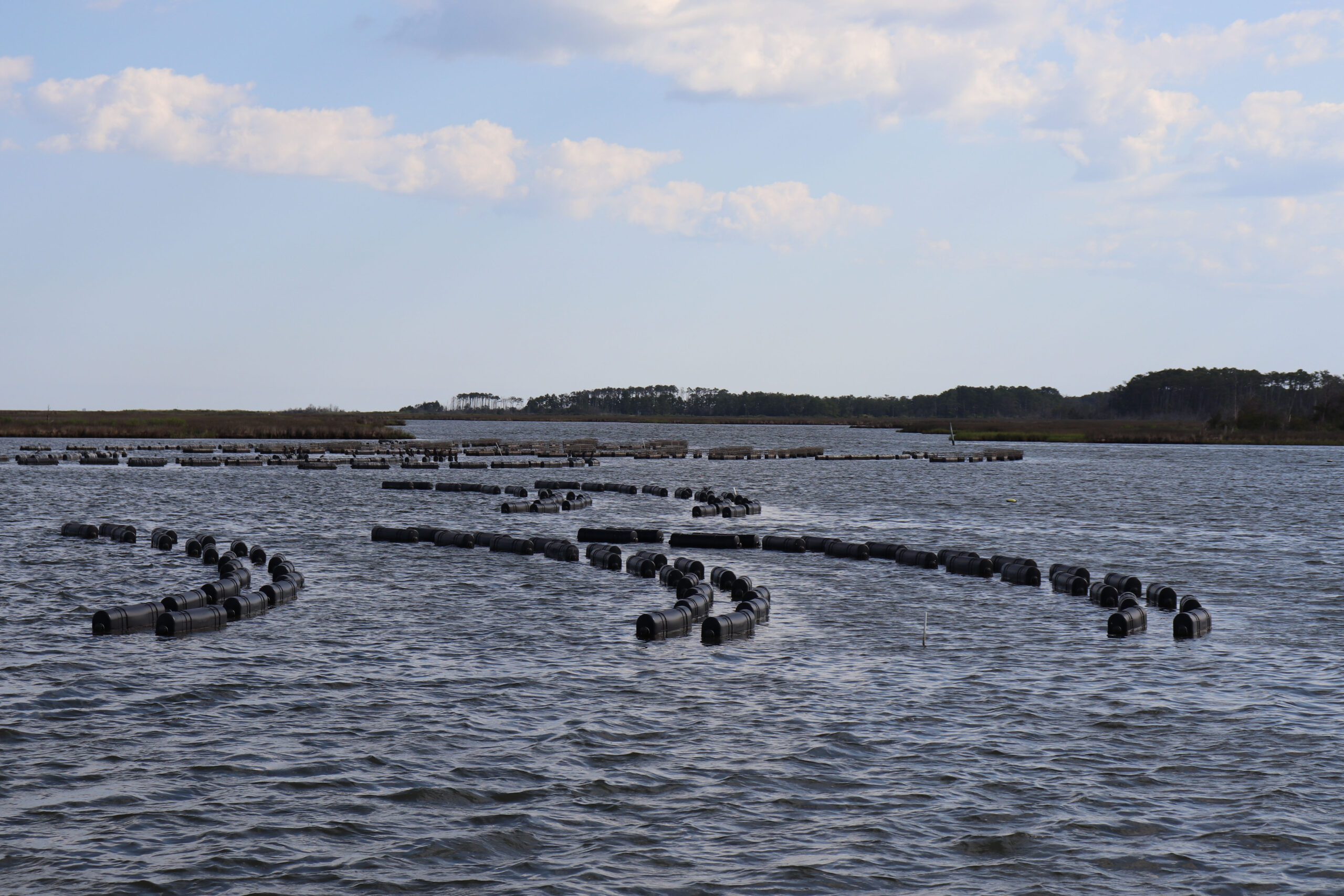Just before we harvest oysters at Tarkill Aquaculture, about a week to ten days before they’re ready to ship to restaurants up and down the East Coast, we move them to the 8.5 acres of our farm dedicated to surface culture.
This is where the oysters rest before harvest, cleaning themselves of the sand and silt that come with being an oyster.
Chefs who serve our oysters say the extra step makes shucking and service a cinch. No sand. No silt. Just plump, sweet oysters.
Other farms employ a similar process, using municipal water supplies. But at Tarkill, we decided it was best to clean the oysters in the same water where they grow, just closer to the surface, away from the sand. The oysters then naturally shed the sand, given the exposure to particulate-free water
Why is this important?
Municipal water supplies contain chemical disinfectants such as chlorine or chloramine. Unfortunately for the oyster-eating public, the practice of cleaning oysters in that water also imparts a chemical flavor to the oysters. You may have noticed this “off” flavor in shucked oysters you’ve eaten.
We want our oysters to retain the pure sweetness that comes from the clean, lower-salinity waters where they grow, where the fresh water of Tarkill Creek meets the more saline Chesapeake Bay.

